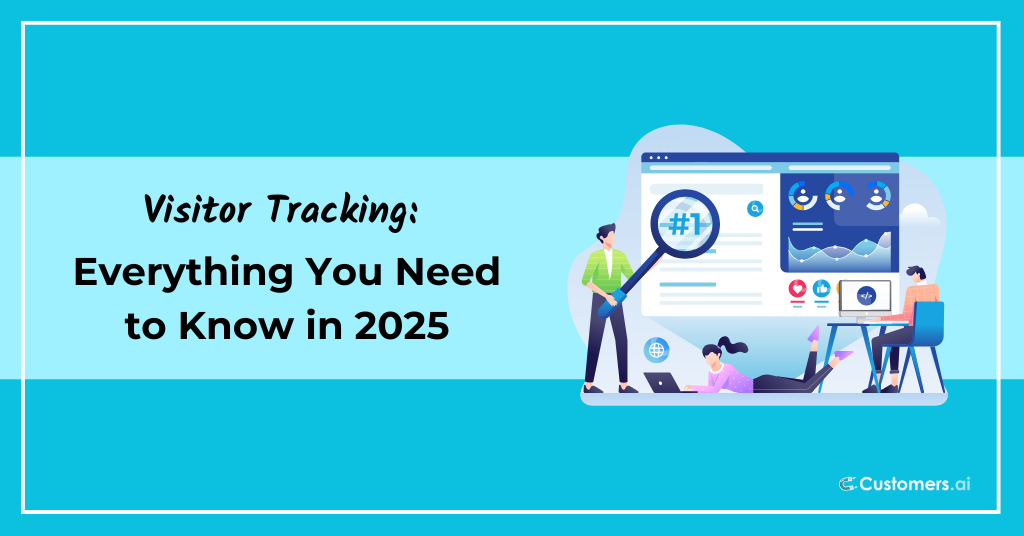Visitor tracking can mean many things. After all, as technology has evolved, our ability (or inability) to track our website visitors has also evolved.
If you want to go way back, visitor tracking used to just answer the question, “How many people are on your website?”. Remember those little counters that people had at the bottom of their sites? Ahh, simpler times.
Now, visitor tracking means so much more. While it can still pertain to the number of website visitors, it now typically relates to the customer journey – who is on your site, what did they do while they were there, what were they interested in, etc.
That’s what we are going to get into today. As we head toward 2025, we want to look at what visitor tracking is and what marketers need to know to be successful.
Here’s what we’ll cover:
- What is Visitor Tracking
- The State of Visitor Tracking in 2025
- Types of Visitor Tracking
- How Does Visitor Tracking Work
- Benefits of Visitor Tracking
- Visitor Tracking Tools & Software
- Visitor Tracking with Customers.ai
- Visitor Tracking FAQs
Let’s dive in.
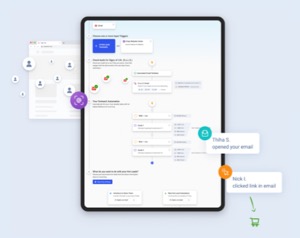
See Who Is On Your Site Right Now!
Get names, emails, phone numbers & more.
Try it Free, No Credit Card Required
What is Visitor Tracking?
At its core, visitor tracking can be defined as the process of identifying and monitoring the actions of users on a website, capturing details such as page views, session duration, and interactions.
If we really want to dig deeper, visitor tracking is a technology that helps businesses see how people are interacting with their website—things like what pages they visit, how long they stay, and what they click on.
This information can then be used to make improvements to the site, create a better experience for visitors, and ultimately boost sales.
Today’s visitor tracking tools can go even further, offering insights like identifying anonymous visitors, tracking the customer journey across channels, enabling personalized marketing, and so much more.
The Current State of Visitor Tracking
We’d be remiss if we didn’t talk about the current state of visitor tracking. Why? Because privacy concerns and regulations have completely reshaped how visitor tracking works.
Back in the day, tools like Google Analytics and Facebook gave us all the data we could want about our visitors. We could identify IPs, company data, demographic data, and so much more.
Not anymore.
The introduction of iOS 14 dealt a huge blow to Facebook’s ability to retarget users by restricting access to key data, and browsers like Safari, Firefox, and Google Chrome have phased out (or started to phase out) third-party cookies, making it even harder to not just get visitor information but also to track users across sites. As a result, businesses have been forced to rethink their approach to tracking while complying with stricter regulations like GDPR and CCPA.
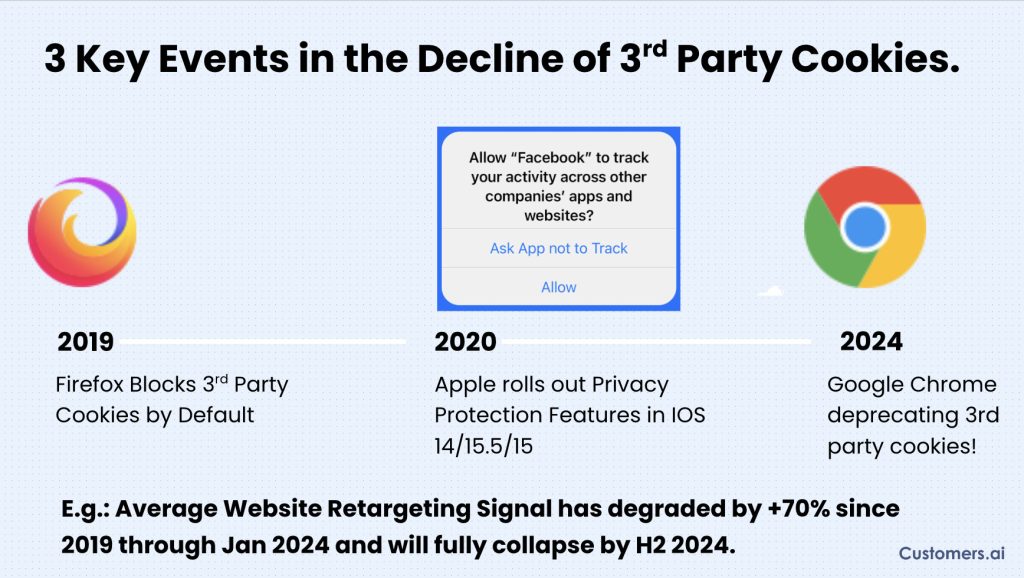
The next phase of visitor tracking looks to be first-party data. Collecting data directly from your own website and customers is now the most reliable method for tracking user behavior.
Tools like server-side tracking and identity resolution platforms are already being used to help businesses adapt and get the information they need to create the personalized experiences customers want.
Types of Visitor Tracking
We mentioned earlier that visitor identification isn’t simple – that means along with having many meanings, there are also several ‘types’ of visitor tracking. These include visitor identification, website analytics, heatmap tracking, session recording, funnel analysis, behavioral targeting, and A/B testing.
Let’s look at what each type does along with examples of tools.
Visitor Identification / Identity Resolution
Visitor identification tools tell you who’s browsing your site, even when they don’t fill out a form. They gather info like IP addresses and behavioral data to create customer profiles, allowing you to see who’s visiting and reach out to potential leads. As we like to say here at Customers.ai, visitor identification tools are especially useful for turning anonymous traffic into actionable insights.
Visitor Identification Tools: Customers.ai
Website Analytics
Website analytics tools give you a clear picture of how visitors are interacting with your site. You’ll get data like page views, bounce rates, and how long people stick around, helping you understand what’s working and what’s not.
Website Analytics Tools: Google Analytics, Adobe Analytics
Heatmap Tracking
Heatmaps show you where people are clicking, scrolling, and spending time on your website. It’s a visual way to see what content grabs their attention and which areas they ignore.
Heatmap Tracking Tools: Hotjar, Crazy Egg, Mouseflow
Session Recording / Replay
Session recording tools let you watch recordings of real user sessions on your site. You can see exactly how visitors navigate, where they get stuck, and what they’re engaging with.
Session Recording Tools: FullStory, Inspectlet, Lucky Orange
Funnel Analysis
Funnel analysis tools track how visitors move through the stages of your sales or marketing funnel, showing you where they drop off. By understanding the path to conversion, you can figure out where potential customers are losing interest and optimize those points to keep them moving forward.
Funnel Analysis Tools: Mixpanel, Kissmetrics, ClickFunnel
Behavioral Targeting
Behavioral targeting tools analyze your visitors’ actions to serve up personalized content and offers. By tapping into their browsing habits and past behavior, you can create a more relevant experience.
Behavioral Targeting Tools: Dynamic Yield, Optimizely, Segment
A/B Testing
A/B testing tools let you test different versions of a page or feature to see which one performs better. You can experiment with headlines, layouts, or calls-to-action, and the tool will show you what works best for your audience, so you can optimize your site over time.
A/B Testing Tools: VWO (Visual Website Optimizer), Unbounce, Convert
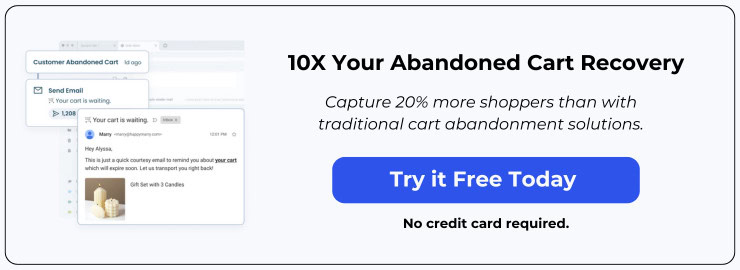
How Does Visitor Tracking Work?
Visitor tracking generally works by installing a small piece of code (a script) on your website. This script gathers data on visitor behavior, like clicks, page views, and time spent on the site. It can also track user interactions across different sessions and devices to build a more complete picture of their journey.
Some tools use browser cookies to track user activity over time, while others rely on methods like reverse DNS lookup to identify companies visiting your site based on IP addresses.
At Customers.ai, our visitor tracking tools use a combination of advanced identity resolution and behavioral tracking technologies that are not reliant on third-party cookies, sign-ins, or form fills. Our proprietary technology has resulted in industry-leading match rates and the ability to identify anonymous visitors even when other tools can’t.
Benefits of Visitor Tracking
We are obviously biased to the many benefits of visitor tracking but if you need some convincing, let’s look at 10 ways visitor tracking can help marketers and businesses take their results to the next level and the applicable use cases.
1. Identifying Anonymous Visitors
Visitor tracking tools can identify visitors who haven’t filled out a form or signed in, providing valuable data about who’s coming to your site and allowing you to reach them via email, ads, or even direct mail retargeting.
Visitor Tracking Use Case: An ecommerce marketer for a luxury clothing brand sees that an anonymous visitor has browsed 10 different product pages, including several high-ticket items, indicating strong purchase intent. Using a visitor identification tool like Customers.ai, the marketer uncovers the visitor’s name, email, and other details. With this information, they can set up a personalized retargeting campaign on Facebook or Google, showing ads for the exact products the visitor engaged with. This allows the brand to follow up with tailored ads, increasing the chances of turning this high-intent visitor into a paying customer.
2. Understanding User Behavior
Tracking tools show how visitors interact with your website—what pages they view, how long they stay, and where they click. This helps marketers understand which content and pages are engaging visitors and which ones may need improvement.
Visitor Tracking Use Case: A skincare brand’s content team notices that blog posts about acne treatment are driving high engagement, with readers often visiting related product pages. After analyzing behavior, the marketer finds that visitors who engage with two or more acne-related posts are 30% more likely to add products to their cart. Armed with this insight, the marketer creates more content around skincare concerns and links relevant products within the posts, leading to higher engagement and increased sales.
3. Optimizing Website Performance
With insights into where visitors spend the most time or where they drop off, tracking tools help identify performance issues like slow page load times or poor navigation.
Visitor Tracking Use Case: The dev team at a shoe retailer notices that many visitors are dropping off on the product pages, especially during peak traffic times. By analyzing website performance data, they discover that the page load time on these product pages is slow, especially on mobile devices. To fix this, they optimize the images, reduce unnecessary scripts, and improve the mobile layout. As a result, the page load time decreases, and bounce rates drop, leading to more visitors reaching the checkout page and an overall increase in conversions.
4. Improving User Experience
Visitor tracking reveals friction points in the user journey, such as confusing navigation or hard-to-find information. This allows marketers to streamline the user experience, making the site easier to navigate and more user-friendly.
Visitor Tracking Use Case: The conversion rate optimization specialist for a home decor store notices that visitors frequently abandon their shopping carts at the shipping information step. After analyzing session recordings, they realize that the shipping costs aren’t clearly displayed until the final checkout stage, frustrating users. To improve the experience, they update the site to show estimated shipping costs earlier in the process, right on the product page. This transparency reduces cart abandonment, leading to smoother checkouts and higher conversion rates.
5. Personalizing Marketing Efforts
By understanding what content or products a visitor is interested in, visitor tracking enables personalized messaging and content recommendations. This makes marketing efforts more relevant and engaging.
Visitor Tracking Use Case: An email marketer for a fitness apparel brand tracks visitors’ behavior and notices that a segment of users frequently view women’s running shoes but never make a purchase. By using visitor tracking data, they identify these high-interest users and create personalized email campaigns that showcase new arrivals and exclusive discounts on women’s running shoes. This personalized approach leads to higher engagement and a significant boost in sales for that specific product category.
6. Tracking Conversions and Sales
Conversion tracking allows businesses to measure specific actions taken on a website, like form submissions, sign-ups, or purchases. This helps marketers understand what’s driving sales and where potential customers might be dropping off.
Visitor Tracking Use Case: A demand generation analyst for a beauty brand sets up conversion tracking to measure how visitors move from product pages to completing a purchase. By analyzing the data, they notice that visitors who engage with product reviews are 25% more likely to complete a purchase. Based on this insight, they decide to highlight customer reviews more prominently across product pages and emails. This optimization boosts the conversion rate, as more visitors now interact with the reviews, leading to increased sales.
7. Enhancing Retargeting Efforts
Visitor tracking helps capture data about visitors who didn’t convert on their first visit, allowing businesses to retarget them with relevant ads or offers. This ensures that you can re-engage potential customers and bring them back to complete the purchase.
Visitor Tracking Use Case: A social media manager for a high-end electronics store tracks visitors who browse premium headphones but leave without purchasing. Using visitor tracking data, they identify those who spent considerable time on the product page and add them to a retargeting list. They then create targeted Facebook and Google ads featuring the exact headphones those visitors viewed, along with an incentive like free shipping or a limited-time discount. This tailored retargeting campaign brings the visitors back, significantly increasing conversions for the premium headphones.
8. Segmenting High-Intent Visitors
Tracking tools can segment visitors based on their interactions, such as those who viewed key pages or added items to their cart. This helps marketers identify which visitors are most likely to convert and focus efforts on them.
Visitor Tracking Use Case: An ecommerce marketer for a jewelry brand notices that visitors who spend time customizing engagement rings on the site’s product builder are highly engaged but often leave before completing a purchase. Using visitor tracking, the marketer segments these high-intent visitors based on their interactions with the custom ring tool. They then create a specific email campaign offering personalized assistance, like a virtual consultation, and send targeted ads showing the exact rings those users customized. This targeted segmentation helps convert high-intent visitors into paying customers by addressing their needs at the right moment.
9. Detecting Drop-off Points in the User Journey
Tracking user behavior allows marketers to see where visitors are dropping off, such as during the checkout process or after viewing a few pages. This data helps businesses address problem areas and improve the overall conversion rate.
Visitor Tracking Use Case: A fashion retailer notices that many visitors add items to their carts but abandon the checkout process before completing the purchase. By analyzing visitor tracking data, the marketer discovers that most drop-offs occur on the shipping options page. Upon further investigation, they find that the shipping options are confusing and lack clarity. To fix this, the marketer simplifies the shipping choices and provides clear explanations of delivery times and costs. This reduces friction in the checkout process, resulting in fewer cart abandonments and an increase in completed purchases.
10. Increasing Lead Generation and Sales Opportunities
Visitor tracking can uncover which sources of traffic bring in the most engaged users, helping marketers focus on high-performing channels for lead generation. With better data on visitor behavior, businesses can tailor their offers and messaging to attract more qualified leads.
Visitor Tracking Use Case: A marketer for a home fitness equipment store uses visitor tracking to monitor which blog posts and product guides drive the most traffic. They notice that visitors engaging with content about home workout routines are more likely to visit product pages for workout gear and equipment. The marketer creates a lead capture form offering a free downloadable workout plan in exchange for an email address. By targeting visitors interested in fitness content, they successfully capture more leads, which are then nurtured with personalized email campaigns promoting relevant products. This strategy boosts both lead generation and sales opportunities.

See Who Is On Your Site Right Now!
Get names, emails, phone numbers & more.
Try it Free, No Credit Card Required
Visitor Tracking Tools & Software
The list of visitor tracking tools and software really could be endless but for the purpose of this guide, we want to give you 10 of our favorites.
1. Customers.ai
Customers.ai offers advanced visitor tracking through identity resolution, helping businesses identify anonymous visitors, gather their information, and retarget them through ads. It’s a powerful tool for converting high-intent visitors into leads by providing detailed insights like name, email, and company information.
2. Google Analytics
URL: https://analytics.google.com
Google Analytics provides comprehensive tracking of website traffic and user behavior. It helps businesses understand their audience with data on page views, bounce rates, and conversion paths, offering valuable insights to optimize site performance.
3. Hotjar
Hotjar combines heatmaps, session recordings, and user feedback tools to track how visitors interact with your website. Its visual insights help businesses improve user experience by identifying popular areas of the site and potential pain points.
4. Crazy Egg
Crazy Egg offers tools like heatmaps and scroll maps to visualize where users are clicking and scrolling on your website. It’s ideal for understanding user engagement and optimizing page layout for better conversions.
5. Matomo
URL: https://matomo.org
Matomo is an open-source analytics platform that tracks user behavior while offering full data ownership. It provides insights similar to Google Analytics but with an emphasis on privacy and data control, making it a good choice for businesses with strict compliance needs.
6. Mouseflow
URL: https://www.mouseflow.com
Mouseflow tracks visitor behavior with session recordings, heatmaps, and funnel analysis. It helps businesses understand how users navigate their site and where they drop off, offering insights to optimize user journeys and boost conversions.
7. FullStory
URL: https://www.fullstory.com
FullStory captures detailed user sessions to show how visitors interact with your website. Its session replay feature helps businesses identify usability issues, making it easier to optimize the site and improve user experience.
8. Kissmetrics
URL: https://www.kissmetrics.io
Kissmetrics focuses on tracking user behavior across the entire customer journey. It provides funnel reports, cohort analysis, and conversion tracking, making it useful for understanding how visitors move from initial engagement to purchase.
9. Segment
URL: https://segment.com
Segment allows businesses to collect user data from multiple sources and organize it into a single platform. It integrates with various marketing tools, helping businesses track customer interactions across channels and deliver more personalized experiences.
10. VWO (Visual Website Optimizer)
URL: https://vwo.com
VWO combines A/B testing with visitor behavior tracking tools like heatmaps and session recordings. It’s ideal for optimizing website performance by testing different versions of pages and identifying what drives the most conversions.
Visitor Tracking with Customers.ai
With Customers.ai, visitor tracking gives you more than just basic data—it helps you see who’s actually browsing your site, even if they haven’t filled out a form.
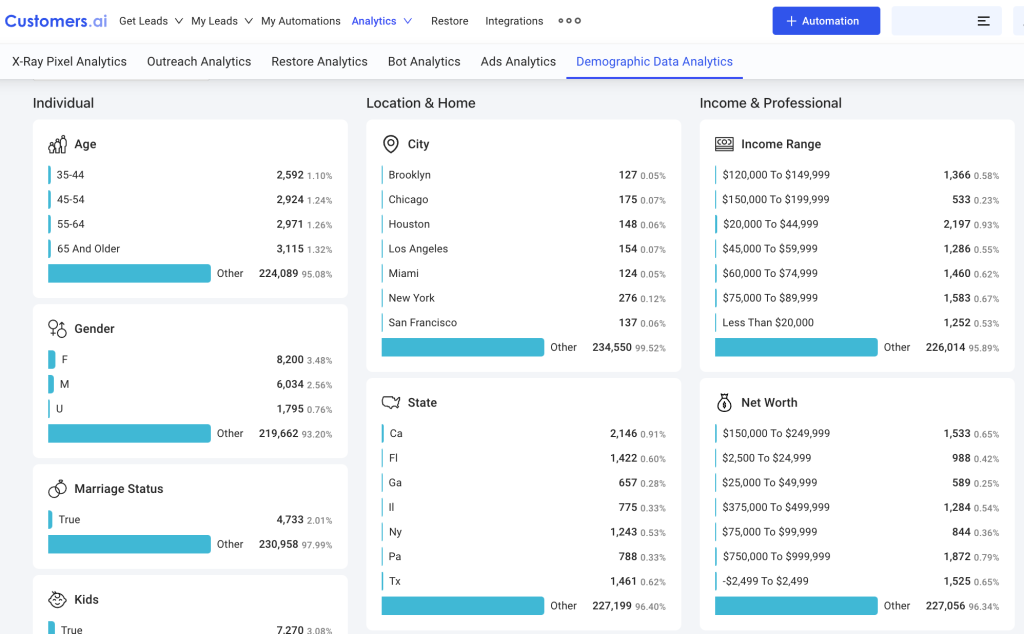
By using website visitor identification technology, you can turn anonymous visitors into real leads, gathering details like their name, email, and company info. This way, you can follow up with personalized retargeting ads through Facebook or Google.
Just look at what Mailer Profit Agency did for their client – by utilizing Customers.ai’s powerful lead capture tools, they were able to triple their client’s email list by capturing warm leads that would’ve otherwise been missed. This not only grew the list but helped drive a staggering $1.7 million in revenue and deliver an impressive 15x ROI for their client!
Sounds pretty awesome, right?
It is and if you’re not tracking your visitors, you’re likely missing out on valuable leads and data that could grow your business.
Don’t let customers slip through the cracks—in just 90 seconds you can start tracking your visitors today with Customers.ai. Start your free trial!

See Who Is On Your Site Right Now!
Get names, emails, phone numbers & more.
Try it Free, No Credit Card Required
Important Next Steps
- See what targeted outbound marketing is all about. Capture and engage your first 500 website visitor leads with Customers.ai X-Ray website visitor identification for free.
- Talk and learn about sales outreach automation with other growth enthusiasts. Join Customers.ai Island, our Facebook group of 40K marketers and entrepreneurs who are ready to support you.
- Advance your marketing performance with Sales Outreach School, a free tutorial and training area for sales pros and marketers.
Visitor Tracking FAQs
1. Why is visitor tracking important for websites?
Visitor tracking is important because it helps businesses understand how users engage with their site, identify issues, optimize performance, and create personalized marketing strategies to drive more conversions.
2. What types of visitor tracking are there?
There are several types of visitor tracking, including identity resolution, website analytics, session recording, heatmaps, and conversion tracking, each providing different insights into user behavior.
3. How does visitor tracking help with lead generation?
Visitor tracking helps with lead generation by identifying high-intent visitors, even anonymous ones, and providing actionable data to retarget them with personalized offers, ultimately turning them into leads.
4. How can I track visitors to my website?
You can track visitors by using visitor tracking tools that collect data through scripts, cookies, and IP addresses, offering insights into user behavior and engagement.
5. What tools are used for visitor tracking?
Popular visitor tracking tools include Google Analytics, Hotjar, Customers.ai, Crazy Egg, and Matomo, which monitor user behavior and provide actionable insights for optimization.
6. What data does visitor tracking collect?
Visitor tracking typically collects data such as page views, session duration, clicks, IP addresses, referring URLs, and sometimes even personal information like name and email (with consent).
7. Is visitor tracking legal?
Visitor tracking is legal as long as it complies with data privacy laws like GDPR and CCPA, which require user consent before collecting personal data.
8. Can visitor tracking identify individual users?
Yes, advanced visitor tracking tools can use identity resolution to identify individual users, providing details like names, email addresses, and company information, but only if the proper consent is given.
9. What is anonymous visitor tracking?
Anonymous visitor tracking refers to tracking website visitors who haven’t filled out a form or provided personal details, often using methods like IP tracking or reverse DNS to gather information.
10. How does visitor tracking improve conversions?
By understanding user behavior and identifying high-intent visitors, visitor tracking allows businesses to tailor their website experience and marketing efforts, leading to better engagement and higher conversion rates.
11. Can visitor tracking help with retargeting?
Yes, visitor tracking helps identify users who visited specific pages but didn’t convert, enabling businesses to retarget them with personalized ads through platforms like Google and Facebook.
12. How does visitor tracking help with website optimization?
Visitor tracking provides insights into where visitors drop off, which pages are popular, and how users interact with the site, helping businesses make data-driven decisions to optimize their website.
13. What is the difference between visitor tracking and website analytics?
Visitor tracking focuses on user actions and interactions on a website, while website analytics provides a broader overview of site performance, including traffic sources, demographics, and conversions.
14. How can I track anonymous visitors on my website?
You can track anonymous visitors using tools like Customers.ai that use methods like reverse DNS, IP tracking, and behavioral data to identify and retarget users who haven’t provided personal information.
15. How long can I track a website visitor?
The duration you can track a visitor depends on the type of tracking used; cookie-based tracking can last until the cookie expires (typically 7-30 days), while server-side tracking can be more persistent.
16. Can visitor tracking work on mobile websites?
Yes, visitor tracking works on both desktop and mobile websites, collecting data on user behavior regardless of the device used to visit the site.
17. What is the best visitor tracking software for ecommerce?
The best visitor tracking software for ecommerce depends on your needs, but tools like Customers.ai, Hotjar, and Google Analytics offer robust tracking capabilities that can improve engagement and sales.
18. How can visitor tracking improve user experience?
Visitor tracking helps identify pain points in the user journey, such as confusing navigation or slow-loading pages, allowing businesses to optimize the experience and keep visitors engaged.
19. What are first-party cookies in visitor tracking?
First-party cookies are small text files placed by the website a user is visiting, and they track user behavior and preferences for a better, personalized experience while staying compliant with privacy regulations.
20. How does GDPR affect visitor tracking?
GDPR requires businesses to obtain user consent before tracking personal data, meaning businesses must be transparent about their tracking practices and provide options for users to opt out.
